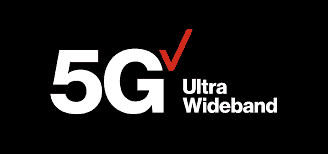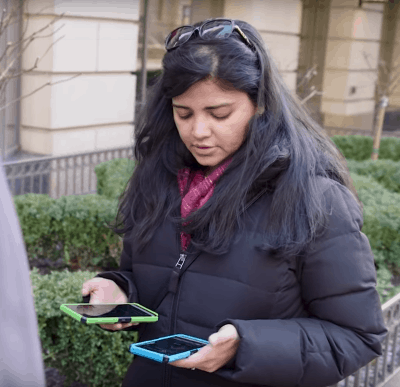 Verizon’s not-quite-ready-for-prime-time mobile 5G network hurriedly held a public launch event April 3rd using a small network of 5G millimeter wave small cells installed in downtown Chicago and Minneapolis, despite employee admissions there were significant issues with the network’s reliability, coverage, and stability.
Verizon’s not-quite-ready-for-prime-time mobile 5G network hurriedly held a public launch event April 3rd using a small network of 5G millimeter wave small cells installed in downtown Chicago and Minneapolis, despite employee admissions there were significant issues with the network’s reliability, coverage, and stability.
Driving Verizon was a chance to win bragging rights by claiming ownership of the world’s first, publicly available, mobile 5G network. In a company-produced video intended for employees, it quickly becomes apparent Verizon was preoccupied by South Korea’s own race to launch mobile 5G, and daily meetings at Verizon’s offices in New Jersey hinted at pressure to announce Verizon’s own 5G launch day as soon as possible.
It was also clearly a priority for Verizon’s new CEO, Hans Vestberg.
“Since I came into Verizon, this is the first thing I wanted to do,” Vestberg said. “I want to be first on 5G in the world.”
But was the network ready for launch and fit for purpose? As of April 1, there were still coverage, latency, and speed issues. Garima Garg, from Verizon’s Network Performance, said the 5G network was “very unstable” early in the first week of April. Attempts to test every smart cell in Chicago were unsuccessful. Garg said the team couldn’t connect to several of them.
Besides beating South Korea, Verizon’s goal was to launch 5G with speeds better than its 4G LTE network and AT&T’s enhanced 4G LTE service it calls “5Ge.” To test network performance, Verizon employees ran countless speed tests, often just across the street from light pole-mounted smart cells around 100 feet away. Just a day or so from launch, Verizon testers were still trying to address network problems, including packet loss and delayed acknowledgments on the TCP side of the uplink, which ‘really hurt speed.’ Verizon claims it resolved some of these problems in the final hours before launch with a custom software build.
Verizon’s efforts almost came to naught, because SK Telecom, South Korea’s largest wireless operator, suddenly surprised the public with a star-studded “5G Launching Showcase” the morning of the 3rd. SK Telecom technically beat Verizon’s attempt to be first to launch, but Verizon pointed out only a handful of celebrities, social media influencers and so-called “brand promoters” were given smartphones capable of connecting to SK Telecom’s 5G network. Verizon’s spin was that South Korea’s launch was effectively a publicity stunt, as no consumer could walk into a store and buy 5G capable devices on that date. Verizon’s launch, however, would be different. Any customer could immediately walk into a Verizon store in the two launch cities and walk out with a smartphone capable of connecting to 5G on the first day the network was switched on. Just in case SK Telecom had any other surprises planned, Verizon decided to move up its official launch date.

Garg (Image courtesy of: Verizon)
On the morning of April 3, Vestberg appeared in a friendly and exclusive CNBC interview announcing the launch of Verizon’s 5G mobile network. By the following day, tech reporters in Chicago gave the network its first thorough test, and found many of the same issues that had concerned Verizon engineers earlier that week. Not only was Verizon’s 5G service area miniscule, several small cells appeared not to be working at all (or at least were not available for connections), and after a day using Verizon’s 5G network, the service was deemed “unreliable” by PC.
Reporters used Moto Z3 phones with the new 5G Moto Mod back panel, which snaps on the back of the phone and delivers 5G connectivity to the Z3. The Mod concept is neither an elegant or inexpensive solution, turning the Z3 into a bulky and heavy handset. The Moto Mod also has its own battery, and not a high-capacity one at that. Testers reported it was dead after five hours of significant use. It cannot be recharged by the phone either. At some locations, reporters were able to verify Verizon’s 5G network did deliver a significant improvement in speed — up to 600 Mbps peaks on small cells that likely had few, if any other customers connected at the time. But the densest parts of Chicago’s downtown were already well-served by Verizon’s 4G LTE network, which capably peaked at 400 Mbps.
Verizon’s mobile 5G network relies on millimeter wave frequencies, which are very short-range and sensitive to solid objects, which can block or degrade the signal. Despite Verizon’s earlier claim that it saw better than anticipated range and performance from the company’s millimeter wave fixed wireless service running in a few other cities, real world testing showed the effective range of Verizon’s smart cells was less than expected for mobile users. Verizon claimed up to 800 feet of range from each 5G small cell, but testing found that claim wildly optimistic.
“I saw more like 300 feet of effective range, with speeds dropping below LTE levels beyond that, even though my 5G indicator would dutifully flicker on until about 450 feet,” reported PC’s
Sascha Segan. “The Mod seems unable to judge when a 4G connection would be better than a 5G one, so it hangs on to 5G for dear life even if it’s just eking out a few megabits. A phone should probably prefer a good lower-gen connection over a poor higher-gen one.”
Real world testing also revealed the expected shortcomings of mobile 5G — it can be downright terrible indoors.
“Stand under the cell site, you get 600 Mbps down. Go into the Starbucks, through glass, and that’s cut to 218 Mbps,” Segan wrote. “Go around the corner and duck into the lobby of a stone building that doesn’t face onto the site, and you’re down to 41.5 Mbps. Lower frequency bands do not have this behavior.”
Of course, it is early days for Verizon’s 5G and network and software improvements are likely to significantly improve service. But Verizon’s experience strengthens the theory that small cells are likely to thrive only in dense population areas where there is already a high traffic demand. It seems unlikely that Verizon’s 5G network will make economic sense to deploy in outer suburbs and rural areas. It may not even play well in the suburbs.
Verizon produced this video covering the challenges launching their mobile 5G network in Chicago and Minneapolis in early April. (12:34)


 Subscribe
Subscribe
On the money that was just bragging rights. Later this year when 5G home equipment is released and in Q1 2020 when they roll out dynamic spectrum sharing so they can use all their spectrum across all the 5G ready in place now 4G equipment coverage will be good. All carriers will have this going for them as all large carrier 4G equipment is 5G ready – just a software update. But its going to take a long time to run the fiber necessary to make those small cells work. But Verizon has over a ghz of mmwave vs Tmobile’s… Read more »
From listening to Vestberg on the quarterly results conference call, he is, as he always is, excessively vague. I took from him that dynamic spectrum sharing would be a thing next year, but the question will be what spectrum? In urban areas in major cities, Verizon already has much of their spectrum deployed. They are in a hurry to ditch 3G to repurpose that for… not 5G but more 4G LTE. Vestberg also seems to be preparing investors for what we figured would happen all along – 5G millimeter wave will be deployed in dense urban centers and near high… Read more »
Nuts. Customers don’t care if Verizon beats South Korea by a few days. I don’t think it makes a difference in their earnings this quarter, or the next, or ever. I am tired of the narrative of “the race to 5G” because it is the finish line that matters and nobody has defined what that is. It’s got something to do with: “providing a service that customers find valuable” and “making money doing it”. We don’t hear about that story because there is no business case for 5G, e.g. nothing 5G can do that can’t be done with 4G. BTW,… Read more »
The business case that delights Wall Street was the extra $10 Verizon planned to charge customers who want to access 5G service. Now it’s on hold. If you look at what is real vs. what is hype, they are being extremely cautious about where small cells are going. They announced around 20 new cities for 5G mobile service today, but made a point to say it won’t be available throughout the service area. That means another deployment for small cells in a few block radius and calling it a day, and I’ll bet it will be largely in urban cores… Read more »
The $10 a month surcharge was never a realistic business plan. Even if it was more reliable and had better coverage than it does, 4G LTE is already pretty good and 5G is not awesome enough to justify it. Few people would buy it — expensive phones might be driven by vanity and conspicuous consumption, but other people are not going to be impressed by your service. (E.g. if you want the display to say “5G” just get AT&T) It’s hard to believe that that $10 a month multiplied by customer take-up would justify the cost. Somebody on Wall Street… Read more »